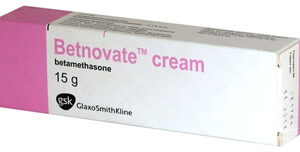Understanding Prednisolone
Prednisolone is a glucocorticosteroid medication primarily used for its potent anti-inflammatory effects. Its use also encompasses the treatment of certain autoimmune disorders, allergies, and adrenal insufficiency. It is a synthetic analogue of cortisol, which is a naturally occurring hormone produced by the adrenal glands. The medication is available in several forms including tablets, oral solution, eye drops, and injections.
Pharmacological Properties
Prednisolone exhibits anti-inflammatory and immunosuppressive properties. It achieves this by inhibiting the migration of white blood cells to the site of inflammation, reducing capillary permeability, and destabilizing cellular lysosomal membranes. It also reduces the production of prostaglandins and leukotrienes, chemicals that are involved in the inflammatory process.
Dosage and Administration
The dosage of prednisolone can vary considerably depending on the specific condition being treated, its severity, and the patient’s individual response. Initial dosing can range from a low dose of 5mg to higher doses of 60mg per day. Administration is typically oral but can be parenteral in certain cases. Dosage must be tailored by a healthcare provider and decreased gradually to prevent adrenal insufficiency on cessation.
Indications for Use
Prednisolone is indicated for a multitude of conditions. These include but are not limited to rheumatologic diseases such as rheumatoid arthritis, skin diseases like psoriasis and eczema, respiratory diseases including asthma and COPD exacerbations, allergic reactions, ocular diseases, gastrointestinal diseases like Crohn’s and ulcerative colitis, and hematological disorders.
Adjunct Therapy Information
In many situations, prednisolone is used as part of an adjunct therapy. This includes combining it with disease-modifying antirheumatic drugs (DMARDs) for rheumatologic conditions, bronchodilators for respiratory conditions, or with other immunosuppressive medications for transplanted organ rejection prophylaxis.
Potential Side Effects
Long-term use of prednisolone can lead to side effects such as adrenal suppression, osteoporosis, weight gain, increased risk of infections, hypertension, and hyperglycemia. Short-term use can also result in side effects which may include mood changes, increased appetite, and insomnia. Eye drops form of prednisolone may cause increased intraocular pressure and cataracts with prolonged use.
Monitoring and Follow-up
Patients prescribed prednisolone for long-term therapy should be routinely monitored. This includes assessment of blood pressure, bone density, electrolyte levels, and eye exams. Follow-up is also necessary to monitor for adverse effects, effectiveness of the therapy, and for adjusting the dosage as required.
Specific Dosage Forms
Among its various dosage forms, prednisolone is available in immediate and delayed-release tablets, oral liquid, topical preparations, injections, and eye drops. The choice of formulation is typically based on the location and severity of inflammation, patient preferences, and the absorption characteristics required for the therapeutic effect.
Drug Interactions
Prednisolone can interact with various medications, potentially altering their effects or increasing the risk of adverse reactions. It may interact with nonsteroidal anti-inflammatory drugs (NSAIDs), increasing the risk for gastrointestinal ulcers. Other interactions include altered responses to vaccines, increased effects of anticoagulants, and reduced efficacy of hypoglycemic drugs in diabetic patients.
Pregnancy and Lactation Considerations
Prednisolone crosses the placenta and can be excreted in breast milk. While the medication may be necessary for certain conditions during pregnancy and lactation, the potential benefits must be weighed against the potential risks to the fetus or infant. Decisions regarding use during these periods should be made in consultation with a healthcare provider.
Storage and Handling
Prednisolone should be stored at room temperature, away from direct sunlight and moisture. Oral liquid forms may require refrigeration depending on the manufacturer’s instructions. Proper storage is essential to prevent degradation of the medication, which can affect its potency and safety.
Safety and Disposal
Unused or expired prednisolone must be disposed of properly, in accordance with local regulations, to prevent accidental ingestion by children, pets, or environmental contamination. Safety measures include keeping the drug out of reach of children and not disposing of it in household garbage without proper guidance.
Special Population Considerations
Special considerations must be taken when prescribing prednisolone to special populations such as the elderly, who may be more susceptible to side effects, especially osteoporosis and hypertension. Similarly, pediatric patients may require dose adjustments and monitoring for growth suppression and other potential pediatric-specific effects.






Reviews
There are no reviews yet.